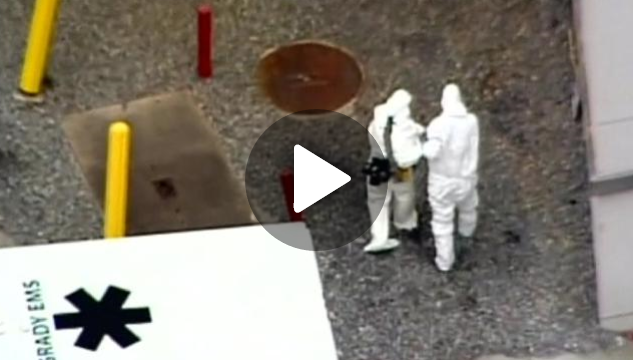IT’S the deadliest Ebola outbreak the world has seen, killing more than 700 people and infecting 1300.
Now the incurable virus, which has no treatment and no vaccine, is en-route to the US for the first time in history, bringing home two American aid workers who are seriously ill.
It comes amid dire warnings from the World Health Organisation the deadly epidemic is spiralling out of control. But as the leaders of affected countries announced a $100 million action plan to battle the disease, how does the US plan to contain it?
The patients will arrive on a Gulfstream jet, which are often used to transport celebrities and politicians, although this one has a very different purpose.
The private plane is outfitted with a special collapsible portable tent designed for transporting patients with highly infectious diseases. It’s called an Aeromedical Biological Containment System and is designed to house a single patient and stop any infectious germs from escaping.
It was built to transfer Center for Disease Control employees exposed to contagious diseases for treatment and will land in Atlanta at one of the most tightly sealed isolation units in the country, US officials said Friday.

Once there, the patients will be treated at Atlanta’s Emory University Hospital, where US officials are confident they won’t put the public in danger.
State Department spokeswoman Marie Harf said in a statement released Friday the government is working to ensure any Ebola-related evacuations “are carried out safely, thereby protecting the patient and the American public”.
The Dobbins Air Reserve Base in Marietta, Georgia, will be used for the transfer, a department of Defense spokesman said.


The two Americans — Dr. Kent Brantly and Nancy Writebol — worked for U.S. missionary groups in Liberia at a hospital that treated Ebola patients.
Both are in a serious condition and were still in Liberia on Friday, according to the North Carolina-based charity Samaritan’s Purse, which is paying for their transfer and medical care.
Both were deemed stable enough for the trip to Atlanta, said Emory’s Dr. Bruce Ribner. Hospital spokesman Vincent Dollard said the first patient was scheduled to arrive Saturday.
Brantly, 33, works for Samaritan’s Purse while Writebol works for another U.S. mission group called SIM. Late last week, Samaritan’s Purse officials said Brantly had tested positive for the virus. Shortly after that announcement, Writebol’s infection was disclosed.
The deadly disease is spread through direct contact with blood or other bodily fluids from an infected person. The incubation period is between 2 and 21 days with symptoms including a sudden fever, feelings of weakness, muscle pain, headache and sore throats.
This leads to vomiting, diarrhoea, rashes, organ failure and unstoppable bleeding. Fatality rates range from 60 to 90 per cent. Liberia is one of the three West African countries involved in the Ebola outbreak, the largest since the virus was first identified in 1976.

The two-bed Emory isolation unit opened 12 years ago. It was designed to handle workers from the CDC if they became infected while working on a dangerous, infectious germ.
It is one of about four such units around the country for testing and treating people who may have been exposed to very dangerous viruses, said Dr. Eileen Farnon, a Temple University doctor who formerly worked at the Atlanta-based CDC and led teams investigating past Ebola outbreaks in Africa.
There is no specific treatment for disease, although Writebol has received an experimental treatment, according to the mission groups.
The current outbreak in Liberia, Guinea and Sierra Leone has sickened more than 1,300 people and killed more than 700 this year.
Source: News.com.au

